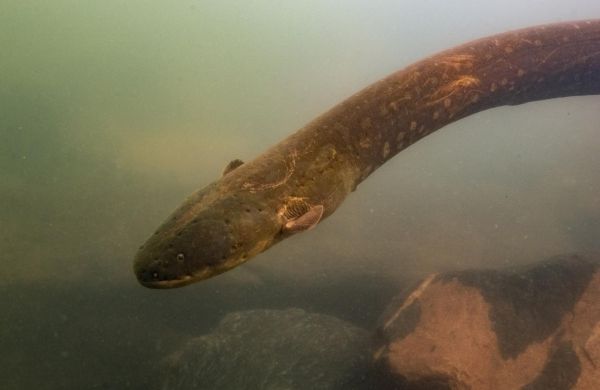An international team of scientists has discovered two new species of electric eel, one of which delivers 860 volts; the highest level of electricity generated by any living creature.
“Eight hundred and sixty volts is an incredible output of electricity for an animal. Our electric plug points are 110 volts,” said Casey Dillman, curator of fishes, amphibians and reptiles at the Cornell University Museum of Vertebrates and a co-author of a study published Sept. 10 in Nature Communications describing the discoveries.
The two new species are named Electrophorus varii and E. voltai, the latter generates the massive charge, which is quite a bit more than the 650 volts recorded from the third, and longest known, species, E. electricus; first described by zoologist Carolus Linnaeus 250 years ago. Since then, it was mostly assumed that E. electricus was the only species that existed – and that it was widely distributed across Greater Amazonia.
The researchers wanted to determine whether only one species of electric eel occurred throughout the vast geographic area of the Amazon basin and the more northerly Guiana shield. To test the idea of a single widespread species, the team collected 107 new specimens from a network of collaborators throughout South America and Europe. The three species are very similar in appearance, and thanks to technological advances that provided new genetic, morphological and ecological data, the team identified the two new species.
Read more at Cornell University
Image: South American rivers are home to at least three different species of electric eels, including a newly identified species capable of generating a greater electrical discharge than any other known animal, according to a new analysis published in the Sept. 10, 2019 issue of the journal Nature Communications. Electrophorus voltai (shown above), one of the two newly discovered electric eel species, primarily lives further south than Electrophorus electricus on the Brazilian Shield, another highland region.
Scientists discovered that E. voltai can discharge up to 860 Volts of electricity--significantly more than the previously known 650 Volts generated by E. electricus. This makes the species the strongest known bioelectric generator, and may be an adaptation to the lower conductivity of highland waters. (Credit: L. Sousa)


